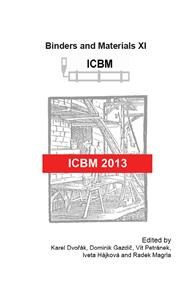[1]
Fridrichová M., Dvořák K., Gazdič D., Kulísek K.: Cenizas volantes de lecho fluidizado como un componente base de las materias primas del cemento portland, Cemento Hormigón, 2011, 82(944), p.30–41. ISSN 0008-8919.
DOI: 10.20868/upm.thesis.1139
Google Scholar
[2]
EN 197-1 ed. 2, Cement - Part 1: Composition, specifications and conformity criteria for common cements.
Google Scholar
[3]
Poon C.S., Kou S.C., Lam L., Lin Z.S.: Activation of Fly Ash/Cement Systems Using Calcium Sulfate Anhydrite (CaSO4), Cement and Concret Research, www. sciencedirect. com, (2001).
DOI: 10.1016/s0008-8846(01)00478-1
Google Scholar
[4]
Chemical Comparison of Fly Ash and Portland Cement, Headwaters Resources, Data 2007 [online], www. flyash. com.
Google Scholar
[5]
Sebök, T, Šimoník J, Kulísek K, The compressive strength of samples containing fly ash with high content of calcium sulfate and calcium oxide, Cement and Concrete Research 31 (2001) 1101 – 1107.
DOI: 10.1016/s0008-8846(01)00506-3
Google Scholar
[6]
Wu, Y., Anthoney, E.J., Jia, L., Steam Hydration of CFBC Ash and the Effect of Hydration Conditions on Reactivation, Fuel, www. sciencedirect. com, (2004).
DOI: 10.1016/j.fuel.2004.01.006
Google Scholar
[7]
Fly Ash – Types and Benefits, Headwaters Resources, Data 2007 [online], URL: www. flyash. com.
Google Scholar


